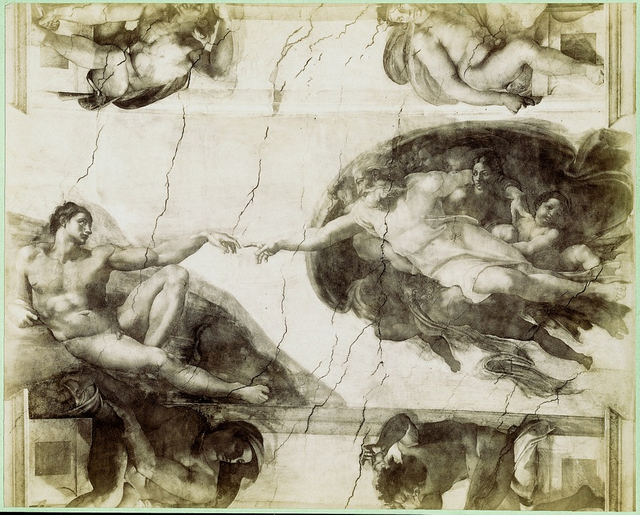What Makes Billy Joel's Style Unique? An Original Essay
Hello everyone! Several days ago, an essay was due for English class in which we had to discuss an American artist's style, and what makes it unique. At first, I was intent on doing John Williams, but I could not find an adequate score in time, so I decided to look at the style of Billy Joel. I apologize for not including any pictures of Billy Joel, but I don't want to risk copyright infringement. Here is the essay which I wrote about Joel's style:
American Composer Billy Joel’s Style
The style of American composer Billy Joel is something which almost anybody can immediately decipher amongst the millions of notable modern styles. This essay will discuss the aspects of that style that make it so recognizable: the elaborate deeper meaning behind the lyrics, the complex rhythmic and harmonic ideas, and the familiar melodies.
It was once said that four generations could be in a room listening to Billy Joel’s music, and each would relate to the lyrics in a different way. One of the hallmarks of Joel’s style is that it incorporates an elaborate deeper meaning amongst the lyrics, which almost anyone can relate to. Take for instance, the song “The Stranger (1),” released in 1977. This song talks about the metaphorical masks which we wear throughout life in trying to achieve certain goals. It holds the meaning that we all do things that would seem completely contrary to our moral values in order to fulfill some form of desire. This is embodied in this quote from the song
“Why were you so surprised That you never saw the stranger Did you ever let your lover See the stranger in yourself(?). . .”
Joel’s songs are also known for the stories they tell. For example, “Miami 2017 (2)” tells the story of a disaster that occurs in New York City that forced all of its citizens to move to Miami. This song was extremely relatable when it was released in 1976 because it was written in response to the Great Default Crisis of 1975. During this crisis, it was widely believed that New York City would go bankrupt. As a result of this, Joel turned it into a fictional scenario and put it in a song, making it extremely relatable for audiences.
Another unique facet of Joel’s works is its appeal to younger generations’ sense of rebellion as well as breaking free of former ideals. Though this was something common amongst previous artists, Joel did it with the approach of a balladeer, utilizing story-telling through music, as well as traditional and logical harmonic progression, to get these ideals across. For example, “Ain’t No Crime (3),” which tells the story of a narrator who stayed out late and had a little too much to drink, causing him to wake up late for work. Joel responds to this by saying that it “Ain’t no crime.” This rebellious nature can be found throughout Joel’s works.
It can also be observed that Joel writes what he experiences based on the fact that as his situation changes, so too do his songs. For example, when he became a father, he wrote several pieces for his daughter, one of which is called “Lullabye (4)” This piece holds a different sound than Joel’s other pieces as it sounds delicate and gentle, and much more fatherly than some of his other works. This piece has a very deep meaning, stating
“Someday we'll all be gone But lullabies go on and on They never die That's how you and I will be.” Ideas such as this touch us all in different ways, but they will always touch us.
The next idea which is within Joel’s style is a complex use of rhythm and harmony. Though, Joel is no Beethoven, he certainly understood the way which certain chords function, allowing him to be logical in his harmonic progressions as well as his voice leading. This advanced harmony can quite clearly be seen in “New York State of Mind (5)” In this piece, the use of several secondary dominants can quite clearly be noticed, and their eventual (though not textbook) resolution. This piece is quite clearly Jazz based like something you would hear in a New York Jazz bar, and shows off Joel’s talent as a singer, pianist, and a composer. It can also be noted that, as mentioned previously, certain traditional harmonic ideas sometimes occur within Joel’s work. For example, the piece “Scenes From An Italian Restaurant (6)” (Which will be discussed several times in this paper). Something quite similar (in function and notation) to a neapolitan sixth is utilized in the string transition from C major to G major (just before the second section). In a similar regard to a classical progression, Joel pivots to G major through this Neopolitan sixth, utilizing a cadence over a dominant pedal point. As you can imagine, this has a unique effect that can’t be noticed in a lot of other rock/pop music of the period.
In the same way, Joel utilizes complex rhythmic ideas in many of his pieces. For instance, “Prelude of an Angry Young Man (7)” which utilizes a quite complex piano introduction, which Joel based off of a drumming rudiment. This song can also be seen as an example of the rebellious teen angst which was previously mentioned.
 Image Source: Pixabay.com, License CC0, Public Domain
Image Source: Pixabay.com, License CC0, Public Domain
 Image Source: Pixabay.com, License CC0, Public Domain
Image Source: Pixabay.com, License CC0, Public DomainJoel is also unique because of his reflection on the styles of other composers, as well as many different genres in his writing. For instance, “Nocturne (8)” in his first album can quite clearly be seen to be based in a classical style, and likely draws on the style of Chopin. While pieces such as “Scenes from an Italian Restaurant (6)” can be seen to draw an influence from the Beatles. It is Joel’s admiration and mixture of these styles that helps to give him such a unique style. One specific instance where Joel quite clearly drew influence from classical music is in “This Night (9),” in which he utilizes a melody originally in the slow movement of Beethoven’s Pathetique sonata. This idea of drawing from classical influences can be directly compared to the Renaissance humanist movement in which artists, such as Michelangelo, drew from classical Greek and Roman influences in forming their art. In the same way that Michelangelo’s work stands (and stood) out, so too does Joel’s. In this piece, Joel also quite clearly utilizes a 60’s doo-opp style, demonstrating his diverse taste for styles and his unique ability in mixing them together.
Finally, Joel’s use of memorable melodies helps him in creating his own unique style. Almost every Billy Joel song has a melody that sounds as though it has already been written and known. It is this skill that truly helps him in creating such memorable music. It has often been said “do not judge a book by its cover,” but the cover is what everyone remembers the most. In similar regards, no matter what, if the melody is memorable, so too is the song. An example of a song which uses memorable melodies is Joel’s “Scenes from an Italian Restaurant (6),” which really is an example of every idea stated in this essay. This piece is really like a combination of three songs, but every section has catchy melodies that listeners could not forget if they tried. This idea of memorable themes really is something notable from Mozart’s music as well. Often, it is almost as if Mozart can’t help but use as many melodies as possible, and each melody is something which listeners find themselves humming later. This is one of the reasons why Mozart’s style is so recognizable, and, in similar regards, this is one of the reason why Joel’s style is so recognizable.
Billy Joel has an undoubtedly unique style due to his use of elaborate deeper meanings amidst the lyrics, the complex rhythmic and harmonic ideas, and the familiar melodies. Joel’s style has been instrumental in demonstrating the capabilities of American artists.
Works Cited
Joel, Billy, “The Stranger.” The Stranger, Columbia Records. 1977.
Joel, Billy, “Miami 2017.” Turnstiles, Columbia Records. 1976.
Joel, Billy, “Ain’t No Crime.” Piano Man, Columbia Records. 1973.
Joel, Billy, “Lullabye.” River of Dreams, Columbia Records. 1993.
Joel, Billy, “New York State of Mind.” Turnstiles, Columbia Records. 1976
Joel, Billy, “Scenes From An Italian Restaurant.” The Stranger, Columbia Records. 1977
Joel, Billy, “Prelude of an Angry Young Man.” Turnstiles, Columbia Records. 1976
Joel, Billy, “Nocturne.” Cold Spring Harbor, Family Productions. 1971
Joel, Billy, “This Night.” An Innocent Man, Columbia Records. 1983
Thanks for reading this! Today, the marching band leaves for Disney World, so hopefully I will be posting some pictures from Disney world in my Steemit shirt. In case I don't see you before the new year, cheers!

(Note) In order to encourage meaningful feedback on the platform, I will check comment trails of users who leave superficial comments (ie "Awesome post," or "Upvoted.") and will mute any users who exhibit a pattern of leaving "spammy" comments.
Really interesting dissection of Joel's work. I'm a huge music fan (and of Billy Joel ), but my music theory knowledge isn't up to this. Will have to listen to 'Italian Restaurant ' again.
Posted using Partiko Android
Thank you!
Interesting. I like Billy Joel songs but I've never heard any of these. I checked on each one and each one sounds new to my ears. Lol. What made you choose each of these songs by the way? I don't think these are popular where I live. :D
I have long been a fan of Joel's work, and utilized my knowledge of it in choosing songs for this prohect.
Hi cmp2020,
Visit curiesteem.com or join the Curie Discord community to learn more.
Hello @cmp2020, thank you for sharing this creative work! We just stopped by to say that you've been upvoted by the @creativecrypto magazine. The Creative Crypto is all about art on the blockchain and learning from creatives like you. Looking forward to crossing paths again soon. Steem on!
All unique essay in the network you can take here https://libraryofessays.com/